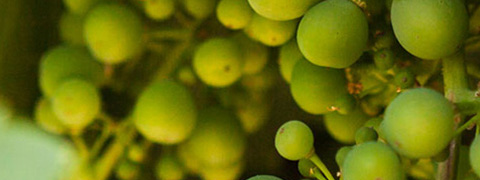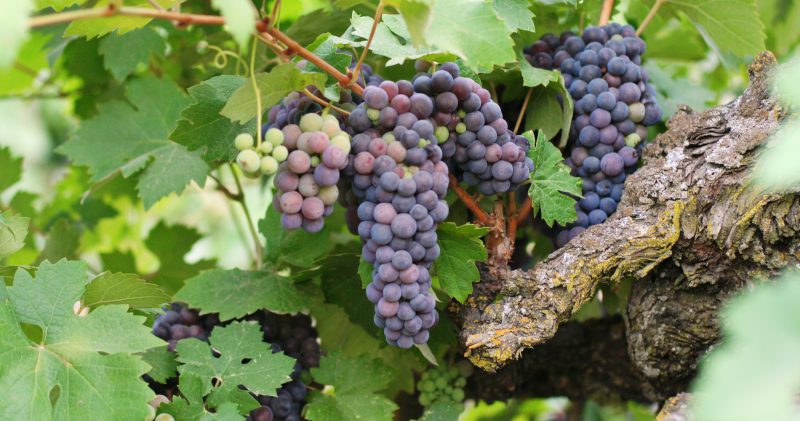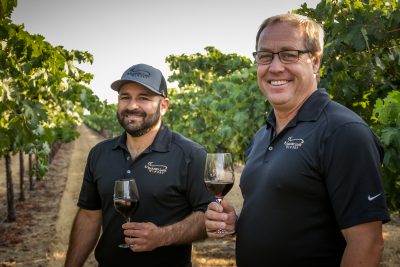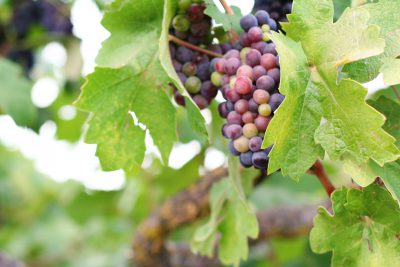



We are back with Bob Highfill once again, as he releases Part III of his latest From the Vine Column series for The Stockton Record. Bob has focused in on our Certified Historic Lizzy James Zinfandel vines for their unique and delicious flavors, striking age and special farming requirements. Planted back in 1904, we have journeyed with Bob through every stage of Lizzy James’s 2020 growing season. Now, we have almost reached the tipping point of harvest.
It’s time to revisit the Lizzy James Vineyard, the source of Harney Lane Winery’s estate flagship old vine Zinfandel, to focus on another major stage in the growing season.
Owner and grower Kyle Lerner set up the vines for success earlier this year, balancing output by pruning and shoot thinning. Both processes were profiled in From the Vine’s ongoing series looking at the annual growth cycle inside one of Lodi’s signature old vine Zinfandel vineyards, Lizzy James, planted in 1904 in the Mokelumne River micro-AVA.
In Part III, we take a deep look at another critical and exciting stage — veraison.
What is veraison?
In viticulture, veraison is the onset of ripening. The official definition is “change of color of the grape berries.” From the time the vines bloomed in mid-March to today, the tiny, green clusters began to grow through cell division. In early July, the fruit starts to change physiologically. Cell division stops, cell growth begins, and the skin on the berries develops color and tannin.
“The color is all in the skin,” said Lerner, owner of Mettler & Son and co-owner of Harney Lane Winery in Lodi. “That’s also where the lion’s share of the tannin structure comes from the berry itself.”
Why is veraison important?
There are other things going on inside the grapes during veraison. Sugars are developing and the vine is working hard to ripen the fruit. The vine’s goal is to produce a tasty berry attractive to birds and animals in the hope they consume the grape and deposit the seed elsewhere to propagate the species. Man takes that delicious, ripe fruit and crafts wine.
“This is really a fun spot for us,” Lerner said. “It’s really a critical time.”

What does the grower look for during veraison?
The challenge now for Lerner and his general manager, Luis Reyes, is to really manage the moisture content from the soil. Lerner said irrigation management is critical at this stage.
“If there’s a lot of moisture in the ground and those vines are able to uptake it, the moisture will end up in the berry,” Lerner said. “The berries will get very large, sometimes to point where they will press against each other and actually crack.”
And if that happens, problems can arise, Lerner said.
“They’ll start to drip and we’ll lose that cluster.”
Nutritionally, cover crops have provided the organic load. Lerner farms Lizzy James under the Lodi Rules for Sustainable Winegrowing established in 2005, the country’s first certified sustainable management program of the ecosystem, soils, water, business practices, human resources and pest control.
“You look at the vine now and it looks very happy, very well-balanced,” he said. “And if you were to reach in here and eat one of these berries at the moment, I bet we’re getting close, at least having some grape flavors in it.”
Lerner picked a berry and popped it into his mouth.
“Umm, there are really nice sugars developing there,” he said, “and tannins.”
What are tannins?
If you drink tea and feel a gritty texture on your palate, that sensation is from tannin, an organic substance also in coffee, chocolate and some fruits, nuts, herbs and spices. Tannins are a characteristic that lend complexity to wine and help wine age well. Tannin comes from grape skins, as well as grape seeds, grape stems, and oak barrels. Wines high in tannin include Tannat, Sagrantino, Petite Sirah, Nebbiolo, Cabernet Sauvignon, Petit Verdot and Monastrell, according to Wine Folly. Zinfandel generally has moderate tannin and high acidity that make it taste bold and delicious.
In about five weeks, the Lizzy James Vineyard should be ready for harvest, at which time we’ll revisit and continue the series. That’s when all of the work, the pruning, the shooting thinning and the attention to detail during veraison come to fruition.
When we harvest and the flavors are what we’re looking for, they’re like little pillows of grandma’s jam
“When we harvest and the flavors are what we’re looking for, they’re like little pillows of grandma’s jam,” Lerner said. “We actually get that on these berries out here in Lizzy James. I’m excited for those (flavors) to develop.”
Lerner and his late father-in-law George Mettler rescued the 19-acre Lizzy James Vineyard in 2003. The special qualities of the fruit and the wine made from Lizzy James prompted the Lerners and Mettlers to start Harney Lane Winery in 2008. Harney Lane’s Lizzy James Old Vine Zinfandel ($36) was an instant fan favorite and is one of Harney Lane’s most awarded wines.
“I’m looking forward to seeing how close we get to hitting the target,” Lerner said. “I’m excited for the fruit and I can’t wait for this vintage.”
